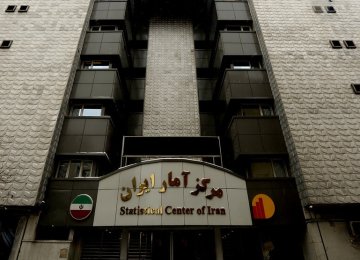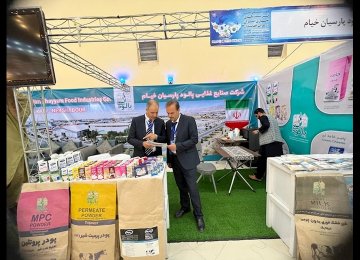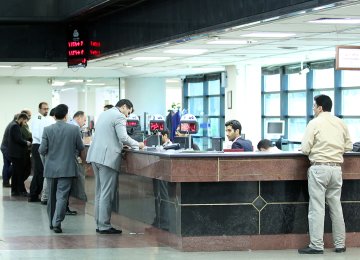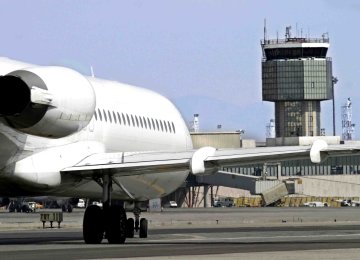Iranian steelmakers’ daily gas consumption is at 30 million cubic meters, which only account for 5% of the total 800 million cubic meters per day, according to the head of Iranian Steel Producers Association.
“With this small share, whenever gas supply in the country is limited, it is immediately cut off to the steel industry,” Bahram Sobhani was also quoted as saying by Mehr News Agency.
The official noted that despite growth in steel production capacity, producers faced problems in supplying electricity this summer and production declined.
“As soon as winter arrived, we faced gas restrictions, which can lead to electricity supply restrictions,” he added.
Sobhani noted that when heavyweight steelmakers suffer from a decline in production due to reduced gas/electricity supply, downstream industries such as automobiles, home appliances, oil and gas, and construction will also suffer.
About 30 million tons of Iran’s steel production capacity are completely dependent on gas.
Output Decline in Numbers
Latest data released by ISPA show a marked decline in domestic steelmakers’ production.
Iranian steelmakers produced a total of 18.53 million tons of semi-finished products during the current fiscal year’s first eight months (March 21-Nov. 21), down 10% year-on-year.
According to ISPA, billet and bloom made up 10.96 million tons of total semi-finished production, down 15% YOY.
Slab output reached 7.57 million tons to register a 2% decline year-on-year.
The output of finished steel decreased by 8% YOY to 12.82 million tons.
Long steel products had a 7.39 million-ton share in the output of finished steel products, posting a 3% decline compared with the similar period of last year.
Rebar production stood at 6.04 million tons (down 3% YOY). It was followed by beams with 808,000 tons (down 6% YOY) and L-beam, T-beam and other types with 542,000 tons (unchanged from the corresponding period of last year).
The production of flat steel with 5.44 million tons registered a 13% YOY decline.
Hot-rolled coil made up 5.44 million tons of the production in this category, showing a 10% YOY decline, followed by cold-rolled coil with 1.63 million tons, down 10% YOY; and coated coil with 975,000 down 7% compared with last year’s corresponding period.
The output of direct reduced iron stood at 20.07 million tons during the period under review, down 3% YOY.
The decline in steel output is due to the power outages and restrictions imposed on steelmakers in summer.
Power Restrictions
The decline in steel output is due to power outages and restrictions imposed on steelmakers in the past few months.
The Oil Ministry and the National Iranian Gas Company are putting pressure on steelmakers and mining firms to drastically cut their gas consumptions, according to a report by the Persian daily Jahan-e-Sanat.
Specifically, Chadormalu Mining and Industrial Company has been asked to keep its gas consumption to below 30,000 cubic meters per day until further notice. Since the quota is less than 1% of the heavyweight mining firm’s gas consumption under normal conditions, the restriction practically means cessation of production in Chadormalu, inflicting huge losses in lost production.
The report also noted that certain companies have been restricted for longer periods, while others will be less affected.
It went on to say that producers of direct-reduced iron are the prime target of new restrictions due to their energy-intensive nature, adding that since DRI is considered a strategic and key product in the steel industry, the measure will impact the entire steel production chain and lead to massive decline in output of steel products and rising prices in the market.
With the decline in temperature across Iran, gas consumption in households has set a record high.
This is not the first time that industries, especially steelmakers, are facing power restrictions. In the summer of the current fiscal year (June 22-Sept. 22), steel production declined 40% compared with the previous quarter (March 21-June 22) due to electricity cuts amid record high domestic consumption.
In a letter to the Supreme National Security Council, ISPA has put steel mills’ losses due to power outages at $6 billion from the beginning of the current Iranian year (March 21) to Sept. 12.
According to ISPA, 82 days of production were lost during the period due to power outages and 300,000 direct and indirect jobs were lost or restricted, the news portal of the association reported.
Summer demand led to severe power and water shortage in summer in most regions, resulting in blackouts and dry taps.
The record came as high temperatures nationwide drove general electricity consumption to new heights in summer, prompting authorities to prioritize domestic users over industries in supplying power.
As the manufacture of steel and steel is an energy-intensive process, related factories were subsequently restricted by the Iran Power Generation, Distribution and Transmission Company (locally known as Tavanir) and have been only allowed to work at a fraction of their capacity during specific hours.
According to Tavanir Spokesman Mostafa Rajabi Mashhadi, summer electricity restrictions on industries were removed as of Sept. 23.
World’s 10th Biggest Steelmaker
Latest data released by the World Steel Association show Iran’s steel output has declined, yet the country’s global standing remains unchanged.
Iranian steel mills produced a total of 25.7 million tons of crude steel from the beginning of 2021 to the end of November, registering a 3.4% decline compared with the corresponding period of 2020.
Iran's November output hit 2.7 million tons, down 5.2% year-on-year.
China was the world’s largest producer in the 11-month period with 946.4 million tons of steel output, down 2.6% YOY.
It was followed by India with 107.3 million tons (up 19.3%), Japan with 88.4 million tons (up 16.8%), the United States with 78.8 million tons (up 18.9%), Russia with 69.7 million tons (up 7.1%), South Korea with 64.6 million tons (up 5.6%), Germany with 36.9 million tons (up 13.5%) and Turkey with 36.7 million tons (up 13.4%).
Iran is placed after Brazil (ninth) with 33.4 million tons (up 17.4% YOY).
Despite the decline in output, Iran maintained its global status as the world’s 10th biggest crude steelmaker.
Iranian steel mills produced a total of 29.02 million tons of crude steel in 2020, to register a 13.35% rise compared with 2019 and the highest growth in the list of the world's top 10 producers.













Add new comment
Read our comment policy before posting your viewpoints